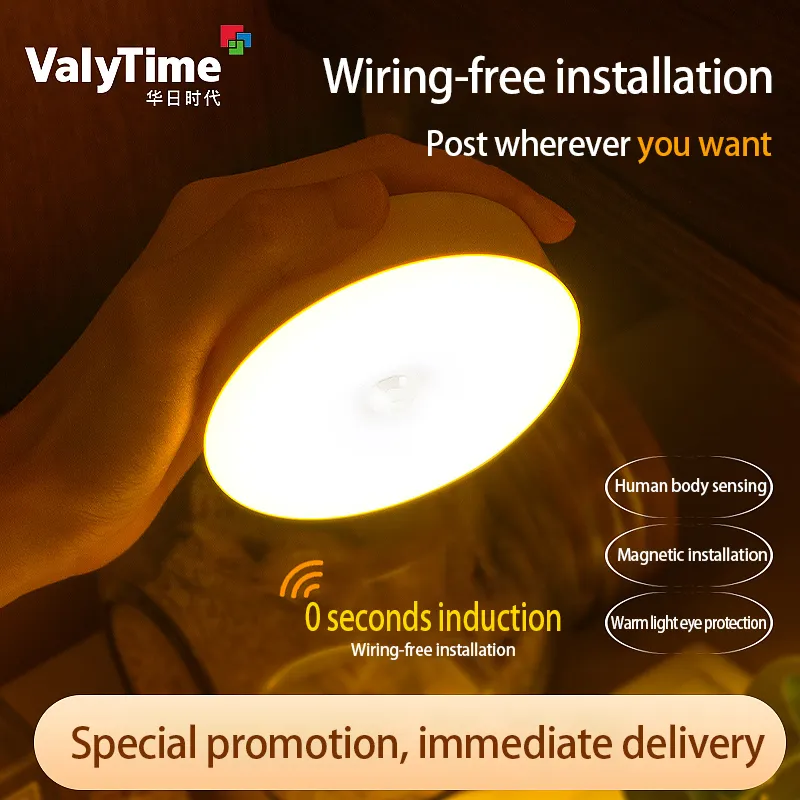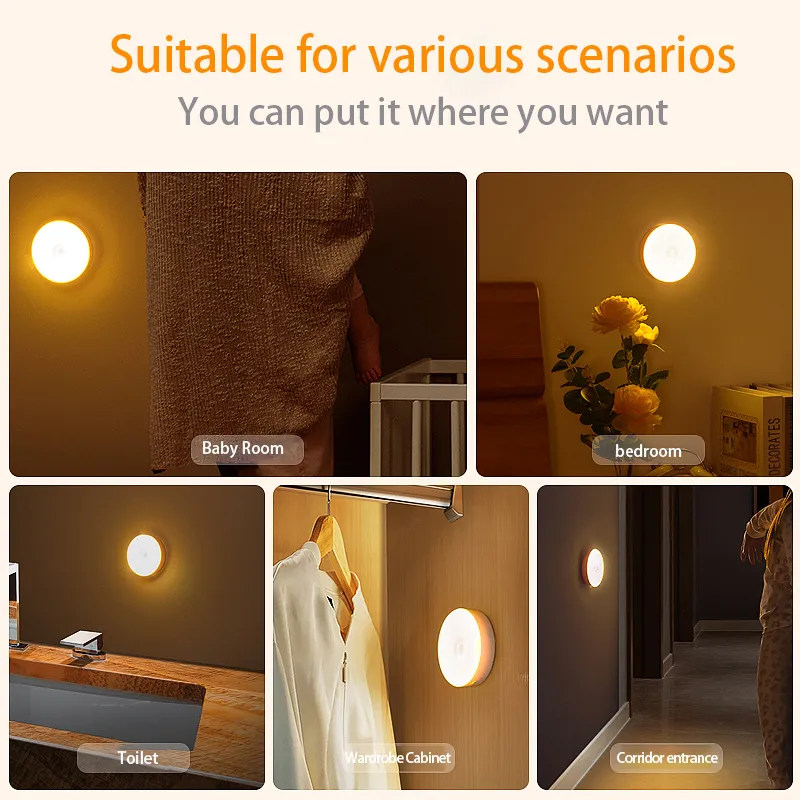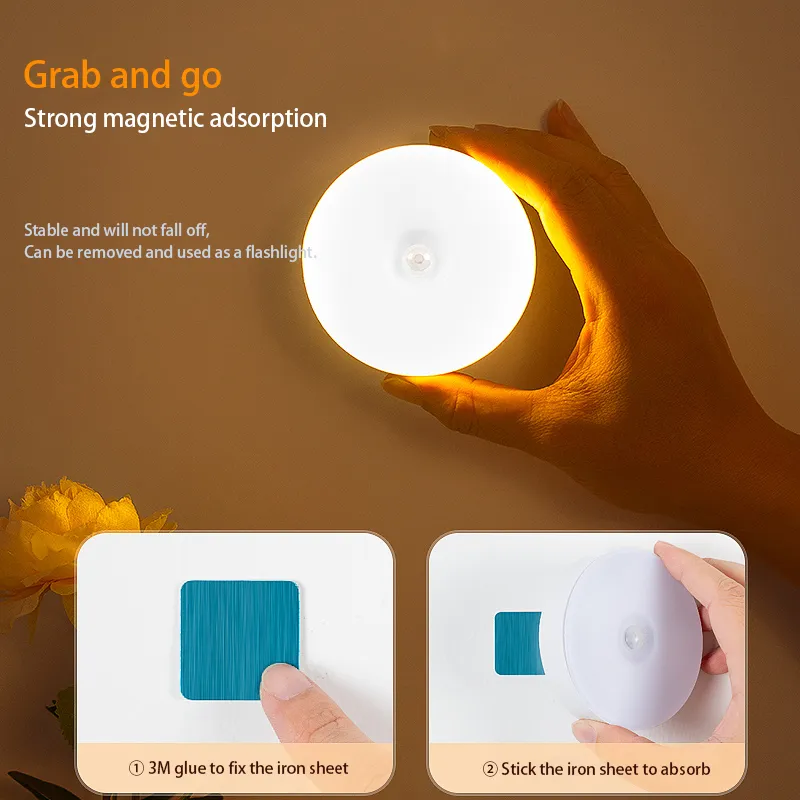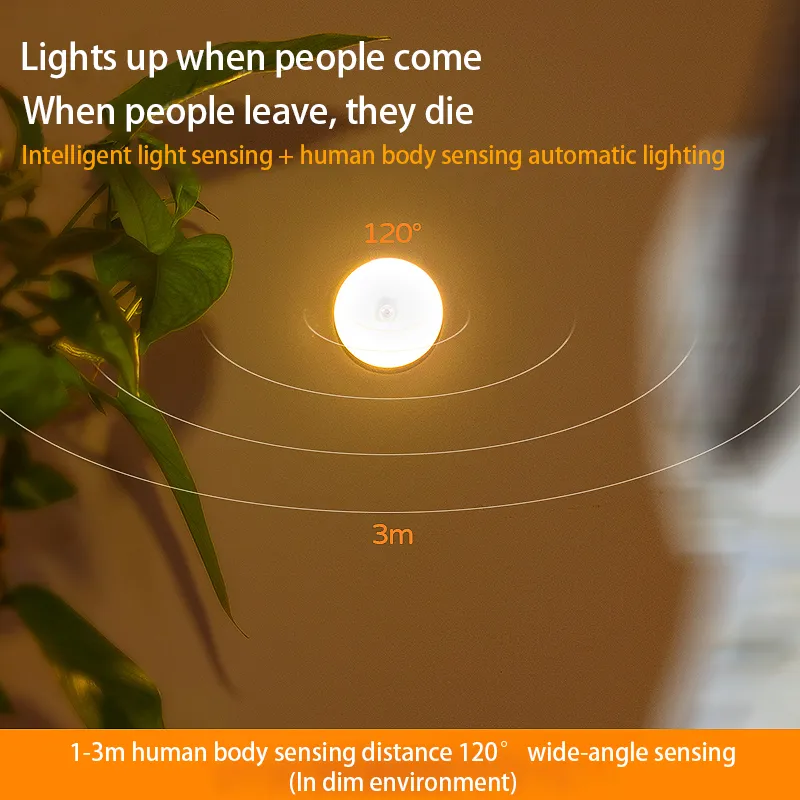Where is it not suitable to place LED Motion Sensor Night Light?
LED Motion Sensor Night Light is a smart lighting device widely used in homes, offices, and public places. It can sense human activity through infrared sensing or microwave radar, automatically light up when motion is detected, and automatically turn off after no activity, effectively saving energy and improving the convenience of night lighting. However, not all places are suitable for installing LED Motion Sensor Night Light. Some environments may affect its sensing effect, and even cause false triggering, shortened service life, or malfunction.
So, where is it not suitable to place Motion Sensor LED Night Light? This article will analyze in detail from multiple aspects such as the working principle of the sensor, environmental factors, electromagnetic interference, temperature influence, and light source interference, to help users better choose a suitable location for installing LED Motion Sensor Night Light and avoid unnecessary use problems.

Where is it not suitable to place LED Motion Sensor Night Light?
In order to ensure the normal operation of LED Motion Sensor Night Light, we need to understand which environments may affect its operation and try to avoid installing it in these places.
1. Areas exposed to direct sunlight
Cause analysis:
The PIR (passive infrared) sensor of LED Motion Sensor Night Light relies on detecting changes in human infrared heat. If it is installed in a place exposed to direct sunlight, the heat radiation of the sunlight may interfere with the sensor, causing it to mistakenly think that someone is moving, resulting in frequent false triggering of the light.
During the day, sunlight will directly affect the sensitivity of the sensor, causing it to lose its sensing effect and unable to turn on or off normally.
Recommendation: Avoid installing the LED Motion Sensor Night Light in places exposed to direct sunlight for a long time, such as windows, balconies, and outdoor terraces, otherwise it will easily affect the sensing accuracy and service life of the device.
2. Areas that are too humid or susceptible to water splashes
Cause analysis:
The electronic components in the Motion Sensor LED Night Light, such as circuit boards and sensors, are easily affected by humid environments, resulting in performance degradation or even short-circuit damage.
The PIR sensor may be disturbed by water vapor in a high humidity environment, mistakenly thinking that it is human movement, resulting in false triggering.
If water splashes directly onto the lamp, it may affect its normal operation and even pose a safety hazard of short circuit.
Recommendation: Avoid installing the LED Motion Sensor Night Light directly in the bathroom shower area, on the edge of the kitchen sink, or in other places where it may come into contact with water. If it must be used in a humid environment, it is recommended to choose a waterproof LED Motion Sensor Night Light with a higher waterproof rating (such as IP65 and above).
3. Metal surface or near metal
Cause analysis:
Microwave sensing LED Motion Sensor Night Light usually relies on microwave radar to detect changes in the reflected signal of an object, and metal materials will shield or reflect microwave signals, resulting in sensing failure or false triggering.
If the Motion Sensor LED Night Light is installed near metal doors, metal cabinets, refrigerator surfaces, or other large-area metal objects, it may seriously affect the sensing sensitivity or even completely block the sensing signal.
Recommendation: Avoid installing the LED Motion Sensor Night Light on metal doors, next to metal cabinets, refrigerator surfaces, or other large-area metal structures to ensure that its sensing is normal.

4. Overheated environment (such as near heaters, stoves, and air conditioner outlets)
Cause analysis:
The PIR sensor determines whether someone is moving by detecting the infrared heat of the human body, and heaters, stoves and other devices will release a lot of infrared heat, which may cause the sensor to misjudge and frequently trigger the light.
The hot and cold air of the air conditioner will affect the temperature distribution in the room, increase the thermal sensing error of the PIR sensor, and make it unstable to detect human activities.
Recommendation: Avoid installing the LED Motion Sensor Night Light in places with high temperature or drastic temperature changes such as heaters, radiators, stoves, and air conditioner outlets to avoid affecting the sensing effect.
5. Too narrow or closed space (such as drawers, cabinets)
Cause analysis:
The LED Motion Sensor Night Light usually requires a certain sensing range and viewing angle to work properly. Installing it in a too narrow space (such as a drawer or a completely closed cabinet) may cause sensing failure or slow triggering.
If the sensor is blocked or there is not enough space for the infrared signal to propagate, the light may not turn on or off normally.
Recommendation: If you need to install Motion Sensor LED Night Light inside a cabinet or drawer, it is recommended to choose a small sensor light designed for narrow spaces and ensure that the sensor is exposed to the outside to improve the sensing effect.
6. Strong light interference area (such as near TV, computer screen, other light sources)
Cause analysis:
Some LED Motion Sensor Night Lights rely on light sensors to determine the ambient light intensity and decide whether to turn on the night light. If installed in a strong light interference area (such as TV, computer screen, strong light lamp), it may affect the sensor's judgment, causing the light to fail to turn on or off correctly.
Recommendation: Try to avoid installing LED Motion Sensor Night Light near TV, computer screen, and large LED lamps to prevent light interference from affecting its normal sensing.

How to choose the correct installation location?
Through the above analysis, we can draw the following conclusions:
Places not suitable for installing LED Motion Sensor Night Light
● Areas exposed to direct sunlight (such as windows and balconies)
● Humid or splash-prone places (such as bathrooms and near kitchen sinks)
● Metal surfaces or large areas of metal (such as refrigerators and metal cabinets)
● Overheated environments (such as radiators, stoves, and air-conditioning outlets)
● Too narrow or enclosed spaces (such as drawers and inside cabinets)
● Areas with strong light interference (such as near TVs and computer screens)
Places suitable for installing LED Motion Sensor Night Light
✅ Corridors and stairs (providing safety lighting)
✅ Bedside of bedroom (convenient for getting up at night)
✅ Entryway and wardrobe (with open design)
✅ Dim areas such as garages and basements
The correct installation location can ensure the sensing accuracy of LED Motion Sensor Night Light, avoid false triggering or failure, and improve the efficiency and service life of lighting. Therefore, when choosing to install LED Motion Sensor Night Light, environmental factors should be fully considered to ensure the best user experience.

Huari Lighting Co., Ltd., established in 1996, is a leading manufacturer of LED lighting products based in China. Our 92,000-square-meter factory produces more than 1 million products each month, including LED ceiling lights, downlights, and energy-efficient bulbs such as GU10 and PAR. With ISO 9001 and ISO 14001 certifications, we ensure the highest quality standards for all our products. All our products meet CE, RoHS, and ERP certification requirements. We offer affordable pricing, bulk discounts, and customized solutions to meet your needs. Huari Lighting is your reliable supplier for high-quality, cost-effective LED lighting solutions. Reach out to us today for a quote and special promotions!
